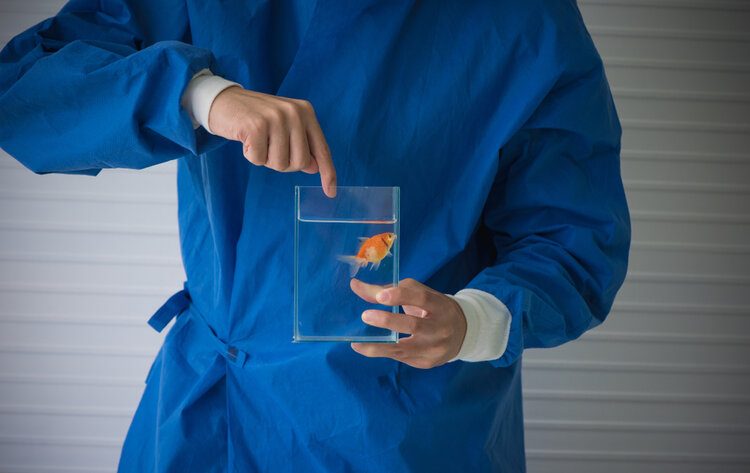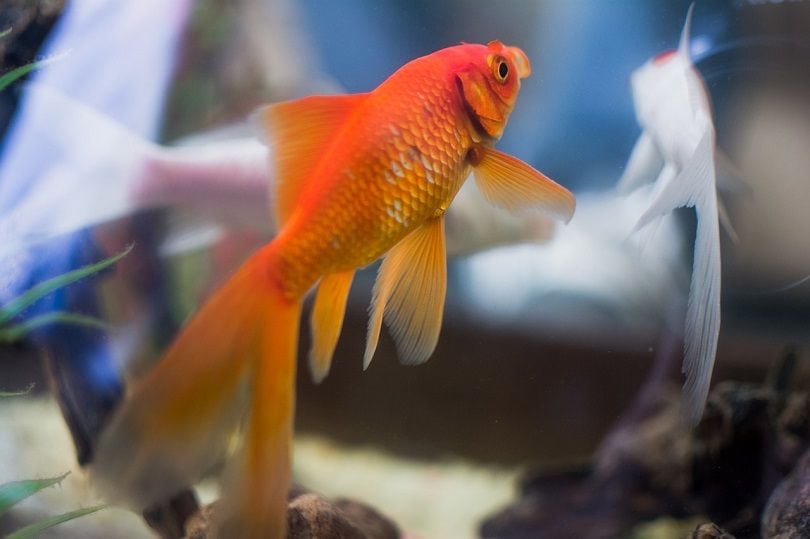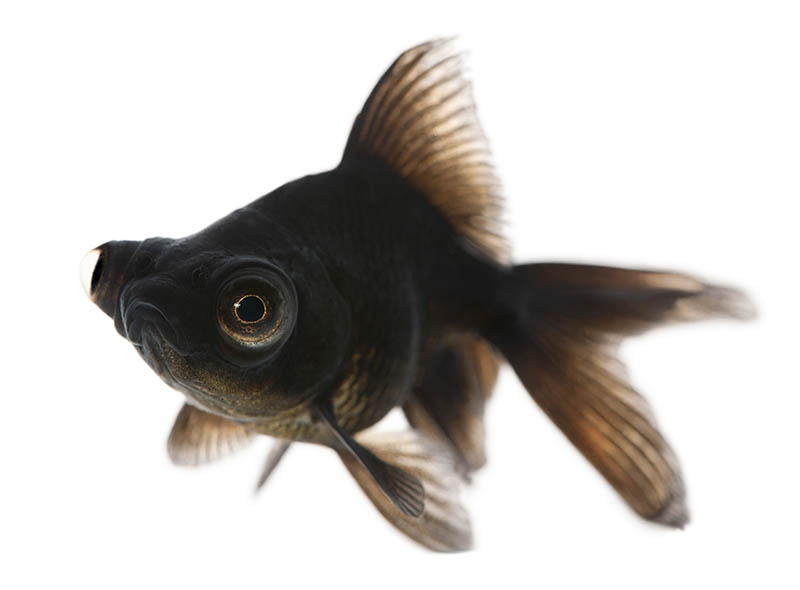7 Top Snails for a Goldfish Tank: Compatibility Guide
Updated on
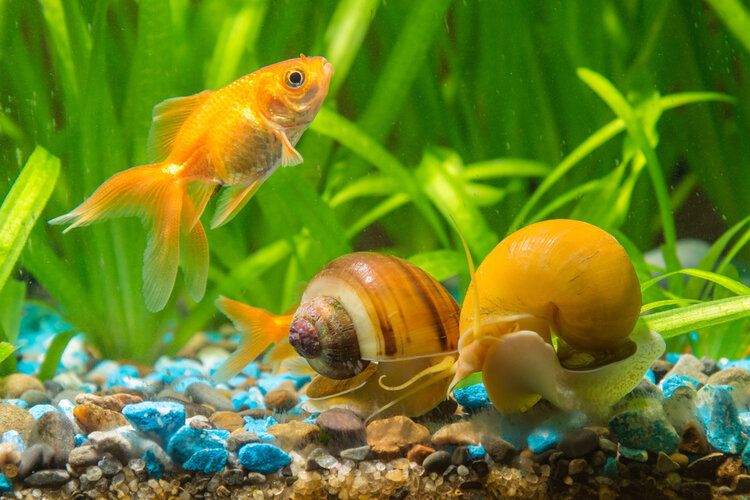
Aquatic snails can be a fun and interesting addition to your goldfish tank, but it’s important to select the right snail species for your tank. If you’re looking for a snail with a low bioload that will help keep algae to a minimum in your tank, then you might be looking for a different snail than if you’re searching for a large snail that will bring extra interest to your tank.
You should also ensure that you’re selecting a snail that is appropriate for a goldfish tank. Goldfish can sometimes be rough with their snail tank mates, and they also have different water parameter needs than some snails.
The 7 Snails for a Goldfish Tank
1. Mystery Snail
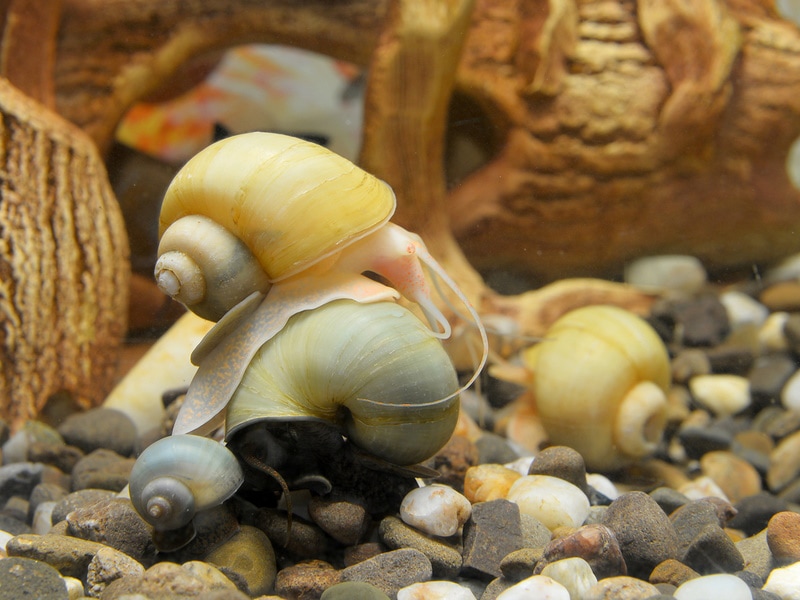
| Origin: | South America |
| Lifespan: | 1–2 years |
| Size: | 1–2 inches |
The mystery snail has multiple names, including spike-topped apple snail and Inca snail. These popular aquatic snails can get relatively large—up to 2 inches in width—and they are extremely active, social, and peaceful. They have funny behaviors that can be fun to watch, like climbing to the top of the tank and then “jumping” and floating to the bottom, only to turn around and do it again.
These snails reproduce easily and in large numbers, but their eggs are laid above the waterline and are both easy to see and remove. Mystery snails do have the potential to become invasive and may not be legal to own everywhere, so check the laws in your area before bringing one home.
2. Rabbit Snail
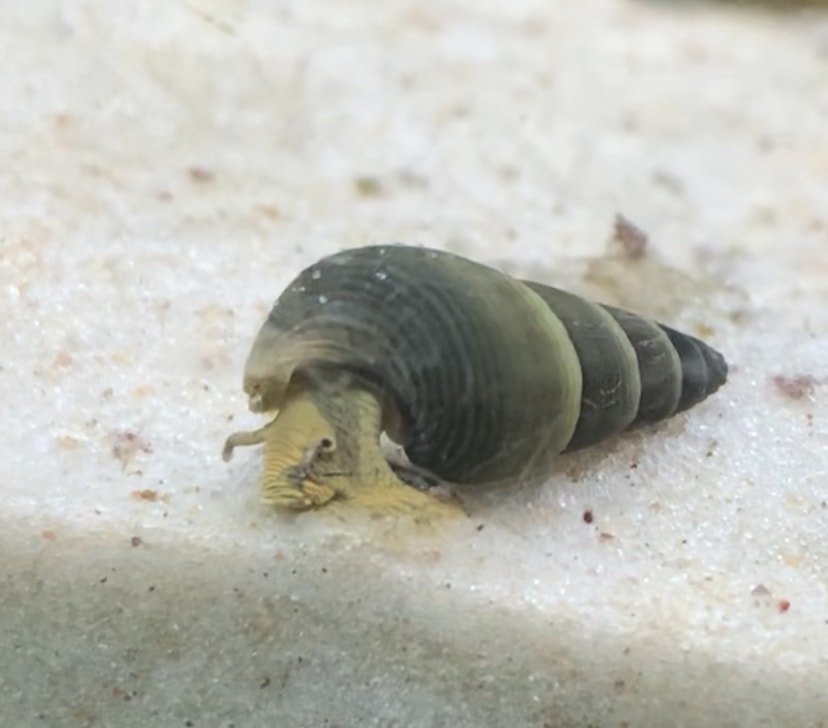
| Origin: | Indonesia |
| Lifespan: | 1–3 years |
| Size: | 1.5–3 inches |
Although they’re less popular than mystery snails, rabbit snails are one of the newer snails to the aquarium trade and are rapidly growing in popularity. They are named for their cute, rabbit-like faces. These snails can reach up to 3 inches in length.
If you’re looking for a snail that won’t reproduce, the rabbit snail is a great option. They cannot reproduce asexually, so a male and female must be present for reproduction, and they reproduce slowly and in very low numbers.
They are excellent scavengers that will help keep your tank clean, but their large size also means they will add to your tank’s bioload. Although they love to eat algae and dead plant matter, they aren’t commonly known to eat live plants.
3. Nerite Snail
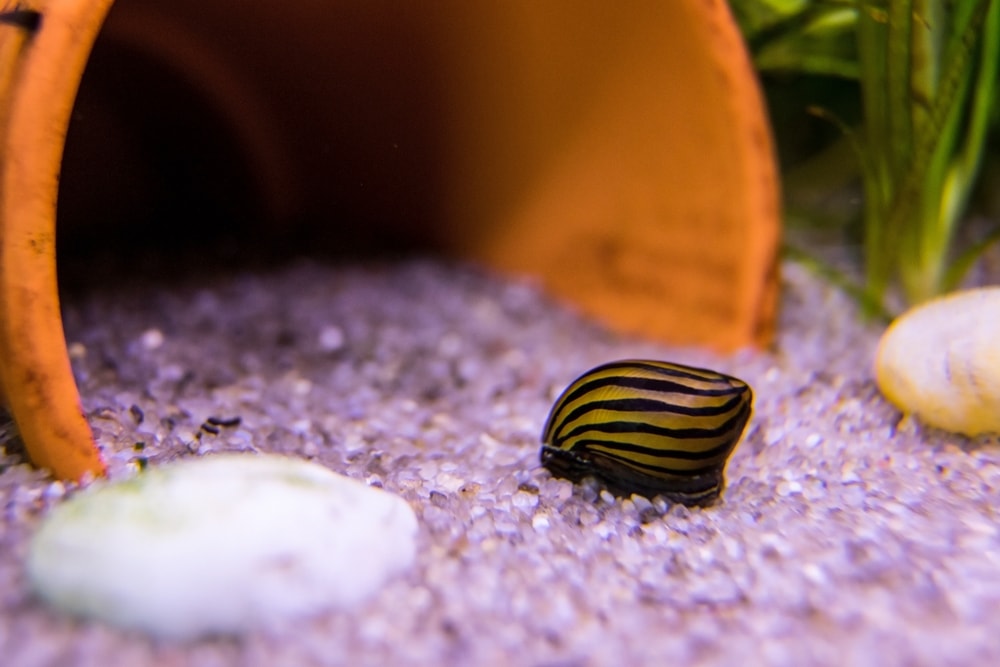
| Origin: | Africa, Asia |
| Lifespan: | 1–2 years |
| Size: | Up to 1 inch |
Nerite snails are extremely popular aquatic snails that come in multiple varieties, including zebra, olive, red racer, tiger, and horned varieties. Different species come in different sizes, but nerite species typically do not exceed 1 inch in width. These cute, active snails are great for helping to keep your tank clean and free of algae.
They cannot successfully reproduce in freshwater because their reproduction requires brackish water. However, nerite snails can (and will!) lay eggs. Nerite keepers often refer to it as “bedazzling” the tank since they tend to leave their eggs on surfaces throughout the tank. While these eggs won’t result in successful offspring, they can be a major pain to clean up.
4. Pagoda Snail
| Origin: | Southeast Asia |
| Lifespan: | 1–2 years |
| Size: | 1–2 inches |
Pagoda snails are extremely unique and beautiful snails, but they are still relatively rare in the aquarium trade, so they may be difficult to come by. These lovely snails are extremely peaceful and, thanks to their spiked shells, are unlikely to be picked on by goldfish.
In the wild, pagoda snails can live for up to 5 years, but in captivity, they rarely live past 2 years of age. The reproductive habits of the pagoda snail are somewhat mysterious, but we do know that they reproduce by giving birth to live young. Their reproductive process is slow, and they can be extremely difficult to breed, making this a good pick if you don’t want a snail reproducing in large numbers in your tank.
5. Ramshorn Snail
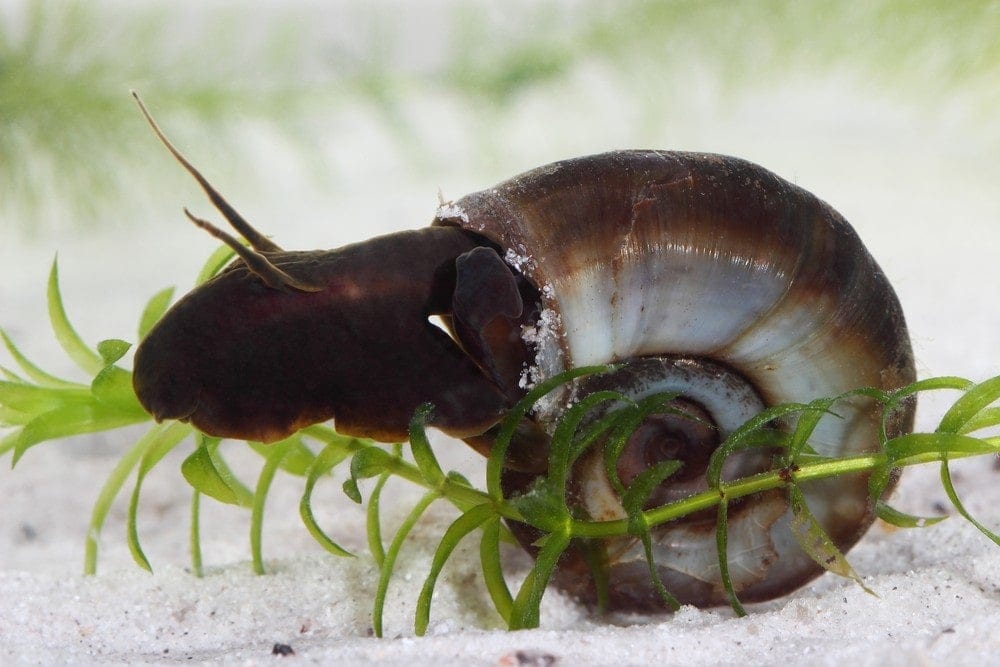
| Origin: | North America, Asia, Europe |
| Lifespan: | Up to 1 year |
| Size: | 0.25–1 inch |
Like nerites, ramshorn snails come in multiple varieties, with the size varying between different snails. All ramshorn snails have a distinctive spiral shell that looks like the horn of a ram, regardless of variety. The largest ramshorn variety in the aquatics trade only grows to around 1 inch in width, with the smallest variety barely reaching 0.25 inch.
Because of their small size that makes them susceptible to being eaten by larger goldfish, some people find these snails most helpful in fry tanks and hospital tanks. These are cute snails that come in many colors, and they can help to keep algae clear in your tank.
However, some people consider ramshorn snails to be pest snails because of their rapid reproductive rate. They can reproduce asexually, but if you don’t want your snail to reproduce, you can keep an eye out for their slightly spiral-shaped egg clutches.
6. Japanese Trapdoor Snail

| Origin: | Asia |
| Lifespan: | 1–5 years |
| Height: | Up to 2 inches |
The Japanese trapdoor snail is a somewhat large snail, reaching up to 2 inches in width. The average lifespan for captive trapdoor snails is 1–5 years, but many people have reported their snails living up to 10 years. These snails can be sensitive to water quality shifts, so when kept with goldfish, excellent filtration and maintaining high water quality are essential.
They’re a great addition to your tank because of their efficiency in consuming algae, and thanks to their shape and size, it’s highly unlikely that your goldfish will bother them.
7. Malaysian Trumpet Snail

| Origin: | Africa, Southeast Asia |
| Lifespan: | Up to 1 year |
| Size: | Up to 1 inch |
Some aquarists reading this are clutching their pearls right now from seeing the Malaysian trumpet snail, or MTS, on this list. The idea of intentionally acquiring and keeping MTS is contentious within the aquarium world, at best. These snails have an extremely rapid reproductive rate, and they reproduce asexually, so one snail can turn into dozens very quickly.
What makes MTS such a great addition to your goldfish tank is that they are great at helping to keep the tank clean and these snails love to burrow, so they will help prevent the buildup of toxic gases in your substrate. Their small size does make them susceptible to being eaten by curious goldfish, but their rapid reproduction will ensure your population of snails does not suffer.
The trick to keeping MTS populations in check is to ensure you aren’t overfeeding your tank. Overfeeding will encourage higher rates of reproduction in your tank.
See Also:
Featured Image Credit: Madhourse, Shutterstock

